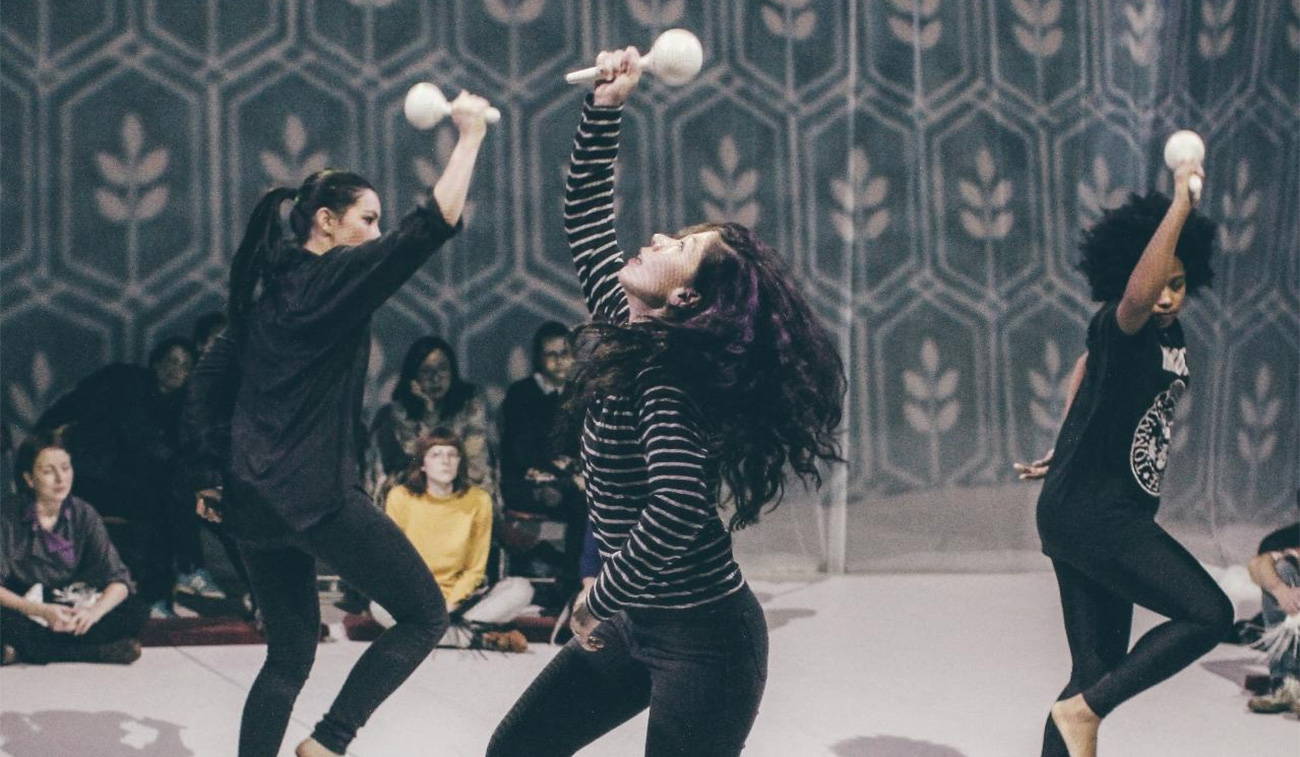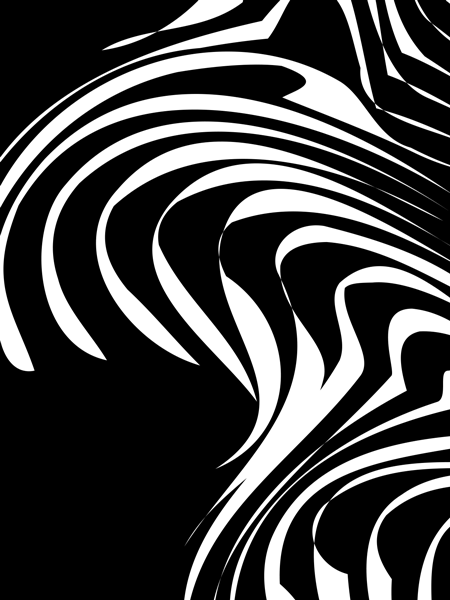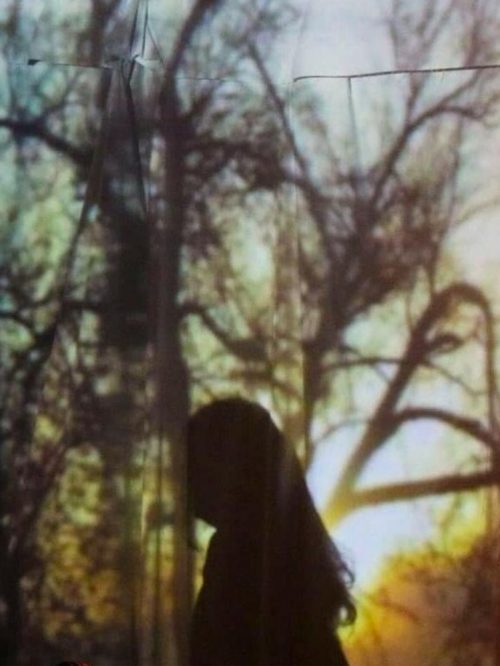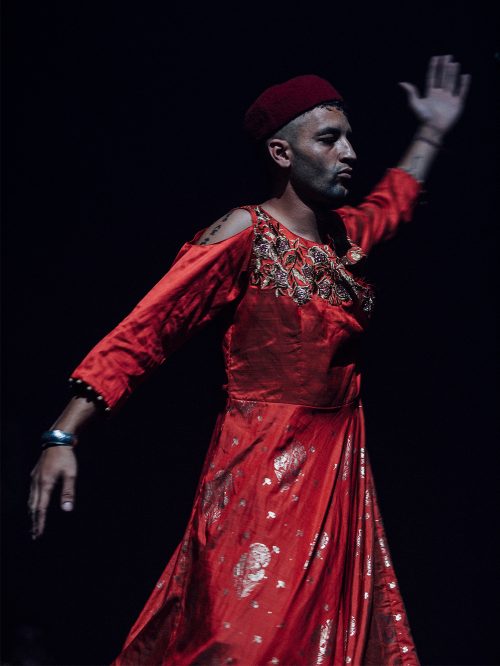La Decolonial Performativa: A call for practices of re-existence
At the RESHAPE conference in Ljubljana, in September 2021, Lebanese artist and writer Raafat Majzoub participated in a panel titled Decolonization and Degrowth, together with Performance theorist Bojana Kunst and two other speakers, Aadel Essaadani, and Ajda Pistotnik. In his contribution he proposed two strands of inquiry in response to the intersections between decolonization and degrowth:
“The first is that problems and solutions are colonial frameworks and in order to decolonize we must stop finding problems and try to solve them. And second, that we need to attack the notion of scarcity as a crucial platform to think about growth, de-growth, the fruit of our being and our modes of sustenance. “ [0]
This panel was a hybrid panel, partly live and partly online. Raafat Majzoub and Bojana Kunst were present via Zoom while the other two participants, Aadel Essaadani and Ajda Pistotnik, present in front of a live audience of which I was also part. Raafat could not sit with us in that room that day, his visa to enter Europe had been denied. The reason why Bojana Kunst could not be there was not addressed.
Bojana Kunst talked before Raafat Majzoub, who was the third speaker in the panel. Throughout her talk I was troubled and somehow disturbed by something I could not point out clearly. Something felt wrong.
In this text I will give form to the ideas stirred by Raafat’s proposition, bring voice to current concerns in relation to writing about decolonial art and the notion of struggle to propose a collective field of action.
From what perspective am I writing?
I write from a European perspective, from hotel rooms, and trains, (I started in Den Bosch Holland to finish now in Munich, Germany, where I came to present work). I write upon an invitation by Sandra Chatterjee, whom I met recently and already love. I do it from a Mestiza[1], a Chi’ixi[2] perspective, a brown perspective. A Meso and South American perspective in diaspora (I have Mexican and Chilean origins), a dancer’s perspective, I come from practice in body and performance.
I write this firstly for my sisters: female and queer artists, writers and cultural workers of color, living and working in between Europe and ‘back home’ . This is for you:
The zero point perspective
In her talk, Bojana Kunst started by saying that she had felt anxious before the talk and that she would not like to propose decolonial art strategies as ‘concepts’, but to approach decolonization as a sum of ‘struggles’. She talked briefly quoting some decolonial thinkers[3], and then proceeded to map the decolonial struggles in the arts, sketching (even if not intended) a sort of theory of decolonial art, presenting the struggles in which decoloniality and degrowth intersected. Even if not intended, these struggles were approached as concepts, dislocated, de-rooted, lofty, not situated. It wasn’t a description of something happening in a specific place produced by specific bodies; (happening may be in Europe, by artist who might share certain experiences like racialization and or, migration, which had or have links with the global south, black and people of color, queer, female artists, etc). Where her analysis arised was not located, invisible. In that way her theoretical observations re-produced the universalizing canon of western modern/colonial knowledge production: A non-place of enunciation.
Colombian Philosopher Santiago Castro Gomez called this non place “the Hybris of the zero point”[4], la hybris del punto cero. In his homonymous book he explains it as “the arrogance of the zero point of the one who has no place, denies its subjectivity to speak in name of all”. This idea of the zero point is at the center of Modern thought and of the hegemony of the west. In this way western history, and western science, to name two relevant examples, speak in the name of universal truth without acknowledging its situatedness, its cultural embeddedness which may not correspond to others.
Raafat’s idea that problems and problem solving are colonial frameworks, stayed in me for a long time, and actually it had been already there before the talk as an intuition and as an experience of personal exhaustion. “I’m not Exotic, I’m Exhausted!”, I would say to my friends, making them laugh about the fact that we are to be often in contexts where one is the only person in the room who realizes these ‘banal’ forms of colonial violence.
A theory of decolonial art, or to decolonize theory:
With which methods will we write about decolonial art? And could this be done collectively?
Writing is a tricky thing; books and written language have acquired through history a predominant role over speech and orally transmitted forms of knowledge. The written language embodies a certain authority. Prestige that is connected with the idea that what is written is truth, goes back to Judeo-Christian understanding of notions like “word” and “book”. Colonial modernity and its institutions have played an important role in establishing this world wide superiority of the written over orally transmitted knowledge and embodied forms of attesting, recording, transmitting, describing and communicating.
To write a theory of something, a history of something, has been done persistently within modern colonial frameworks in a way in which the notion of place is erased. This no place of enunciation reaches towards universality and ownership of the writer, through conquest and discovery. In this way, The History of a European world, written from a Eurocentric perspective, became the history of “the” world at large, conceived from Europe and reproduced in the ex colonies as universal. In a similar way the history of European Art or Dance, became “the” history of Art or Dance, erasing or hiding the fact that those histories were situated, written by the winners of violent colonial-extractive context, from a local perspective, etc. I sensethink that to write about Decolonial art, to situate those “Struggles”, a different approach is needed. A decolonial theory of art, or a theory of decolonial art, should be proposed differently, and with other methods, other forms or structures, with other ways of being affected and affect others, produced from a different perspective, other places, other bodies, bodies of knowledge and experience who can embody the knowledge inherent in those “struggles”. Most importantly, it should be situated. Rooted in decolonial thought and practice, otherwise it will be captured by coloniality.
Even if Bojana Kunst’s intentions were good, her previous anxiety could be understood as a form of announcement to that invisible violence of academic discourse, a modern/colonial tradition, which, when not decolonized on purpose, can only generate concepts even if unwillingly.
Her way of adressing decolonial struggles in the art, from an unlocated distance reproduced colonial discourse. The “Master’s tools” remain unfit for describing a movement aimed at “dismantling the master’s house”. The fact that one person in the room that shared my experience, of knowing the other side of “The Abyssal line[5]” of modernity / coloniality, (a Lebanese woman working in France), confirmed my experience of having felt a well known form of violence, helped me to understand the situation, absolutely invisible for the rest of the audience.
The discomfort we both felt had nothing to do with the speaker’s skin color, but with the speaker’s form of analysis, the tools, to describe at a distance, categorize from a zero point perspective, reproducing the violence of modernity.
Painting flowers
“I want to Paint Flowers”, a Dutch student from DAS theatre at Amsterdam University of the Arts, told me during a workshop I was holding on decolonial practices. “Why being black I can only do political art?” he continued, “ I just want to do art, I don’t want to have to be political, or to have to fight in my art, continuously struggling against oppression, be angry, teach white people about what they can’t see, etc… I would like to have the privilege to just do art”.
I have been angry most of my adult life, angry at the “colonial difference”[6], angry at the barbaric extraction of wealth happening today in my places of origin, by transnational corporations which indirectly re-create the wealth and superiority of the global north by stealing with the help of the local ruling classes. Angry at the devastation, toxicity and disease this extraction leaves behind. Angry at the injustice only the ones who know this side of things or this confusing and sharp in-between-ness, can understand. Angry at racism, at whiteness, as an invisible yet very tangible ideology of power. I grew up in the geopolitical murder in Chile, in the 80’s, and 90’s. Angry at the lies in which the systems of oppression are built upon, and from which art, as a context has historically been part of.
A French artist colleague once commented on my work asking: “Why is your work so angry?” She had the privilege to just do art, un-political, aesthetically driven, conceptual, etc. I did not have that privilege and also did not see it as that, but more as a lack of social responsibility. Actually I had to do that kind of art she perceived as angry because I did it not only for me, but with and for other people – People and places I had the privilege to represent in Europe. To be aware of the ways in which colonial/modernity as a system of thought operates is like learning how to read. One cannot avoid reading when one has learned.
In art I have been a fighter, struggling from within the arts – historically part of the pedagogies of modernity/coloniality, to make space for its exclusions. My dances have been fueled by that anger, by that desire to invert structures of power, even if temporarily; by a wish to establish networks of solidarity with artists in Abya Yala. WAR dances against the forms of erasure and forgetting of modernity, dances of protest, of revolt, of enfleshment have been my specialty. I’m tired of fighting, but I also am too aware and engaged with these topics to just “paint flowers”.
If problems and problem solving are colonial frameworks, to keep attached to the notion of struggle, would it mean to keep trying to solve a problem? And which alternative modes of engagement would allow us to exit that framework while at the same time produce the modes in which we want to exist and give existence to worlds?
Resist? or Re-exist? To practice forms of resistance or go towards re-existence?
We cannot “just” forget or erase the experiences and perspectives which, as the student I mentioned in Amsterdam expressed, deny us of “the privilege of just painting flowers”, but how can we find sustainable strategies to avoid struggle-against as a way of problem solving?
On the notion of Scarcity, or ”There was nothing there”
Some days ago, I watched a video with archival material of a German colony that was established in Chile during the 1960’s online. In the image one can see a native forest reaching till the end of the horizon growing around and between the high mountains and volcanoes of the mid Southern Andes, dividing what today is Chile and Argentina. In the image one can also see a river flowing, down the green valleys and towards the viewer forming a wide and powerful stream. The video images were filmed during the 1960’s. An off voice of one the first “colonos”, or German settlers talks over the image:
“When we arrived to this land there was nothing there, absolutely nothing”.
This comment subtitled over the image of one of richest and most diverse ecosystem on the planet got me thinking about Raafat’s proposition of attacking the notion of scarcity.
What for the German settler colonial eyes was “absolutely nothing”, for the first nations communities living there was a sanctuary, full of presence, full of life, full of “Ngen”. The Ngen is one of the names for the hundreds of Earth beings still alive in Abya Yala today. Who are being defended by first nations communities and environmentalist groups, from the voracious appetite of neo-extractivist trans-national corporations. Nature spirits present in Mapuche ontology, which maintain the balance and order between what the west calls ‘nature’ and human beings.
The Mapuche interact with nature (Ñuke Mapu) through practices of Animism with the Ngen. This practice, together with the worship of ancestors called pillanes, and the worship of Ngenechén (“Supreme Being of Mapuche spirituality), are the most important cults within Mapuche ontology.
German Settlers found “nothing” and proceeded to systematically destroy the Ngen, in the stolen territories they acquired with the help of the Chilean government. Today that place force or Ngen is completely weakened, destroyed by settler colonial mono-cultural forestry.
Solving the problem of poverty, a neo colonial example
When I was around 14 years old my mother and her friends decided to join one of the first environmental demonstrations against a “developmental’ project, a hydro-electric dam that was to be installed in the high areas of one of the main rivers of the south of Chile. The Spanish transnational corporation ENDESA had bought the Chilean Electricity Company and with it, the water rights over the high Bio-Bio river. Those rights were originally acquired during the dictatorship, all this in the frame of neo-(colonial) liberal market economy, was planning to dam the river in Pehuenche Indigenous lands. We went there with around 300 women to defend the river side by side with the Pehuenche communities. We camped at the shores of the Bio Bio river, whose name today acquires a totally new meaning, it was around 1999?
The Bio-Bio was and is still the most important river in Chile, a large body of water which is born in the glaciers of the Andes to become wider and wider till reaching the pacific ocean in the area today is the city of Concepción.
The argument for the hydroelectric dam was development, progress, to mitigate poverty in the region. To give electricity to the Pehuenche communities and jobs, well paid jobs.
Nicolasa Quintreman[7] a Pehuenche commoner together with her sister Berta was one of the main first nations figures opposing the project. In an interview published in the newspaper Diario El Sur, on March 8, 1999, she declared:
“[…] before we were calm, in peace, we slept well. Now we don’t even work because we are struggling to defend what is ours. This is a very big ruin… I am not going to become soft like the rest, my future will always be the same, I am not going to change it”.
And then she explained why she did not accept to exchange her land: “I am not interested in money or a house with a kitchen. I have my place, my stove and my land to work it. I don’t want the light they offer either, I have the sun… I’m fine with that”.
After the mobilizations against the dam and all our efforts of avoiding its construction, blocking roads, and demonstrating in Santiago, Temuco and Concepción, the dam was finally built.
Nicolasa Quintreman, who had spent years advocating for the free flow of the river she loved, had to agree with the land permutation offer made by the company. The traditional cemetery where the Pehuenche had buried their dead for centuries, maybe millenia, was flooded by the Company without any apology.
Today the inhabitants of the High Bio-Bio river pay the most expensive electric service of the whole country. There is no more work for them after the construction of the dam is finished.. The dam will last only 60 years because the sediments will create a kind of swamp, which will reduce the river’s flow.
The argument of solving the problem of poverty contributed to the killing of the Ngen of the Bio-bio river and to subject the once self-sufficient Pehuenche people to an existence in permanent struggle. The solution offered by the company and the state, to solve the invented problem of the poverty of Pehuenche people was to create their total dispossession.
Years later, Nicolasa Quintreman was found dead in the lake she had so strongly opposed.
Looking for the spirits of the earth
One of the slogans of the women during the demonstrations was “Newén Lefú! “.
Translated as strength of the river, but there were other, less used but also important slogans which referred to the Ngén of the place, the Ngen-Ko, or spirit of water, the newén Lefú, or strength of the river.
During the protest camp in, in the afternoon, beside that river we were humbled by the presence of life in strong and strikingly dense biodiversity. The richest I would probably experience during my life.
The Ngen is described in translation from Mapudungun as a “spirit”, a “natural force”, and “entity” one I believe that can only exist when the biodiversity is so tightly knit together and so rich that the place produces a kind of humbleness in the ones inhabiting it. A calm sensation of being in the presence of others.
I have been thinking about the Ngen in relation to the notion of scarcity that has systematically attacked the integrity of its abundance. Trying to understand it and to translate it to the language of my in-between-nes.
What I have understood, from my mestiza perspective, is that the Ngen, like many other Earth beings, which are today still alive in Abya Yala might be the remaining spirits of the Earth’s ecosystem’s integrity.
A holobiont in biology, it is described as an entity formed by the association of different species that give rise to ecological units. I think the Ngen are similar to a holobiont, but described in another ontological language/perspective. It exists as the sum of all presences of the many beings is made of and hosted within, and that immense richness, gives rise to the Ngen as a spiritual unit.
When I migrated to Europe, I would often miss the earth. Wherever I would say it, my European friends would answer, “go to the park”, “go to ‘nature’” and I remember to have felt very uncomfortable with that answer. How could I have then explained to my friends something that I needed 20 years to understand: What I missed was to be in the presence of the Ngen, an entity that had been long gone, murdered by the long history of nature’s exploitation and consumption that happened first in Europe and then expanded to the “new world”.
A “poor” farm: establishing artistic residency places “back home”
A fellow artist from Sri Lanka, who I also met teaching at DAS, Amsterdam University of the Arts, told me about her home in Sri Lanka, a farm in which water and vegetation were abundant, and of which she had thought in the past as a “poor” farm. “We, my family, cannot make money with it, but we can live out of what we produce… I’m starting to think differently about the place, here in Amsterdam there is no such richness.. . I would like in the future to establish a place for artistic residencies there”.
I think the idea of establishing artistic residencies “back home” (even if for some that home is further away in their family history), is a dream for many artists of color working and living in Europe, some venture to go back and work in the so-called third world, in so called “poor farms” where it is difficult to make money but the Ngen are stronger.
An alternative to “continuous struggles” or “just painting flowers”
“Para la ecología indigena Wixarika[8] no es que se están acabando los recursos, sino que no se está trabajando suficiente en la creación del mundo“
“For the Wixarika indigenous ecology it is not that resources are running out, but that not enough work is being done in creating the world”.
Johannes Neurath [9]
For indigenous thought the fact that the climate is changing and things are going out of order is not a consequence of the fact that humans are destroying the earth, but, on the contrary, it is because people are not engaging enough in rituals which re-create life.
For first nations ontologies in the continent, the world is not a given place, is not granted, But it has to be made again, helped and supported in its maintenance.
The rituals of the first nations of Abya Yala have to do with re-creating the origins of the world, with re-membering a certain position through which to relate with the world, make the world again and make our bodies again with it. These rituals happen in relation with place, cosmos, plants, animals, mountains, rivers and rocks, mountains, oceans and glaciers.
In this way, the practices of offering to the Earth beings still practiced in Abya Yala by the first nations populations help to acknowledge the living and to support flows of water, the growth of plants, and the experience of inter relations.
It is not enough to do things in the theatre or the museum, but is necessary to really engage in art which re-creates life, through ritual but also through practices of a decolonial ecology, one that is not anthropocentric and not infused by the narratives of modernity/coloniality.
La decolonial performativa
How are we, artists, thinkers, practitioners of decolonial thought, going to define the terms of our own doing? With which premises will we engage in thinking or writing about decolonial strategies? And more importantly, are we going to create our own frames and contexts?
I envisioned long time ago, in conversations with my friend and colleague Rani Nair, a context in which we would meet and share, discuss, create and re-create life as decolonial artistic practices, through rituals, through offerings, through affect, in Europe but also and in places “back home”, at the very sites of extraction. A network of artists of color, with diasporic identities, in between worlds. To finally be bridges for ourselves to cross to the places we care for.
Art at the places of extraction
A movement like La decolonial performativa, an alliance between artists, BPOC thinkers and practitioners of decolonial thought, could stir a debate in European institutions about allocating funding for cultural initiatives, at the places of extraction. The extraction that fuels the European economy and the green new deal leaving behind draught and sacrifice zones, disease and poverty.
This writing is an invitation to stir a conversation with you, reading this. To think about problems and problem solving, struggles, wealth and scarcity in a different way, and to define our doings in conversation and exchange beyond the art context within we find ourselves working in Europe. To create a meeting and a space to sensethink and inspire each other, outside of academia, the museum and the theatre, because they are part of the pedagogies of modernity, places of concepts, abstractions and de rootedness.
To participate in these rituals, re-create alternative modes of thinking, alternative forms of understanding value; and why not, a group who could help build, fertilize the earth, and renew our energies.
A gathering in which we would come with strategies to define forms of collective practice which would not struggle to solve problems, but to actively work in the re-creation of life in Europe, but also “back home”.
Suggested Citation
Piña, Amanda. 2021. “La Decolonial Performativa: A call for practices of re-existence.” In: Moving Interventions 1: Ambiguous Potentials // Performative Awakenings, December 2021. Edited by / Herausgegeben von: Sarah Bergh and Sandra Chatterjee, with Ariadne Jacoby (CHAKKARs -Moving Interventions), translated by: Anja Tracksdorf, copyedited by: Veronika Wagner. Published by / Veröffentlicht von CHAKKARs – Moving Interventions.
[0] Majzoub, Rafaat. Certain Things Need to Be Said if One is to Avoid Falsifying the Problem. Decolonisation, Degrowth and Art, round table discussion. RESHAPE Conference. Stara Mestna Elektrarna- Ljubjana, 24 September 2021 https://reshape.network/event/certain-things-need-to-be-said-if-one-is-to-avoid-falsifying-the-problem-decolonisation-degrowth-and-art.https://www.youtube.com/watch?v=qr-TcpS2qy4
[1] Anzaldúa, Gloria – Borderlands, La Frontera, The new Mestiza, San Francisco, Aunt Lute Books, 1999.
[2] Rivera Cusicanqui, Silvia- Un Munod Chi’ixi es posible, Editorial: TINTA LIMÓN 2018
[3] Aimé Césaire and Nelson Maldonado Torres
[4] Santiago Castro Gomez, la Hybris del Punto cero:Ciencia, raza e ilustración en la Nueva Granada (1750-1816) (Spanish Edition) 2010
[5] Boaventura de Sousa Santos, the abysal line of Modernity, La hybris del punto cero: Ciencia, raza e ilustración en la Nueva Granada (1750-1816) (Spanish Edition) 2007
[6] Colonial difference, Beyond Abyssal Thinking: From Global Lines to Ecologies of Knowledge .January 2007 Revista Critica de Ciencias Sociais 30(1)https://www.jstor.org/stable/40241677
[7] Quintreman,Nicolasa, https://elpais.com/elpais/2014/02/20/planeta_futuro/1392913018_924314.html
[8] Wixarika,https://en.wikipedia.org/wiki/Huichol
[9] Neurath, Johannes Cosmopolítica y cosmohistoria: una anti-síntesis, Martínez Ramírez y Neurath, Colección: Paradigma indicial, ISBN: 978-987-8384-65-8
About the author
Amanda Piña is a Chilean- Mexican Artist living in Vienna and Mexico City. Her artistic work is concerned with the decolonization of art, focusing on the political and social power of movement, temporarily dismantling ideological separations between contemporary and traditional, human and animal, nature and culture. Her work has been presented in institutions such as Tanz Quartier Wien, Kunsthalle Wien and MUMOK Museum of Modern Art of Vienna, Fondation Cartier pour l’Art Contemporain Paris, Kunsten Festival des Arts Brussels, De Single Antwerp, Royal festival Hall London, Museo Universitario del Chopo, Mexico, NAVE and Festival Santiago a Mil, Chile. She studied Painting before going into performance, Studied Physical Theater in Santiago de Chile, Theater Anthropology in Barcelona and Contemporary Dance and Choreography in Mexico, Barcelona, Salzburg (SEAD) and Montpellier (Ex.e.r.ce Choreographic Centre Montpellier) . In 2006 she received the danceWEB scholarship and in 2007 the scholarship for Young Choreographers from Tanzquartier Wien. In 2018 she was awarded with the Fonca Arts grant from the Mexican Government. Since 2008 she leads the gallery space specialized in expanded choreography and performance nadaLokal in Vienna which she founded together with the Swiss Visual Artist Daniel Zimmermann. Currently works on the realisation of the long-term project Endangered Human Movements, concerned with the re appearance of ancestral forms of movements and cultural practices. Four volumes of research in the scope of this project have been already realised which include performances, Installations, Videos, publications, curatorial frames, workshop and lectures. She is a research fellow at DAS THIRD, from the department of Theatre, Dance and Performance at Amsterdam University of the Arts.
Relevant Interviews:
https://e-tcetera.be/dancing-with-a-deer-a-jaguar-or-a-snake/
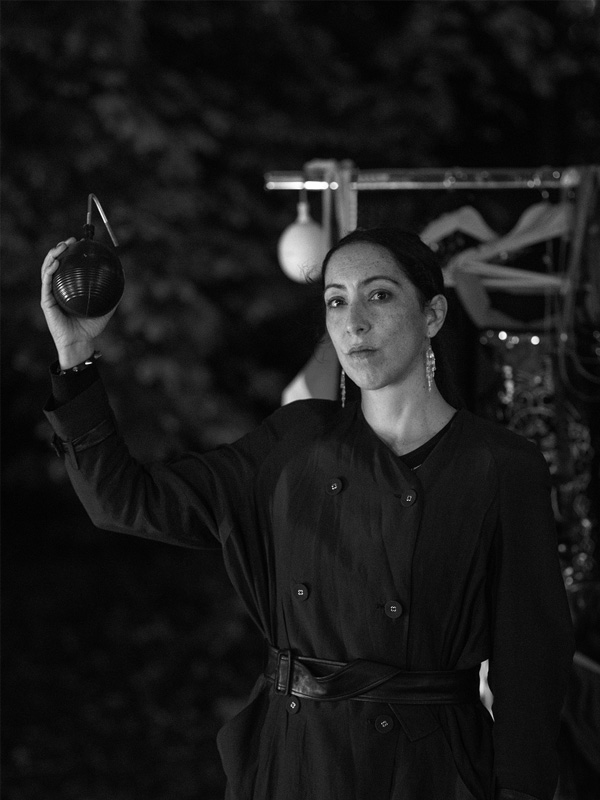
Amanda Piña
Vienna / Mexico City


